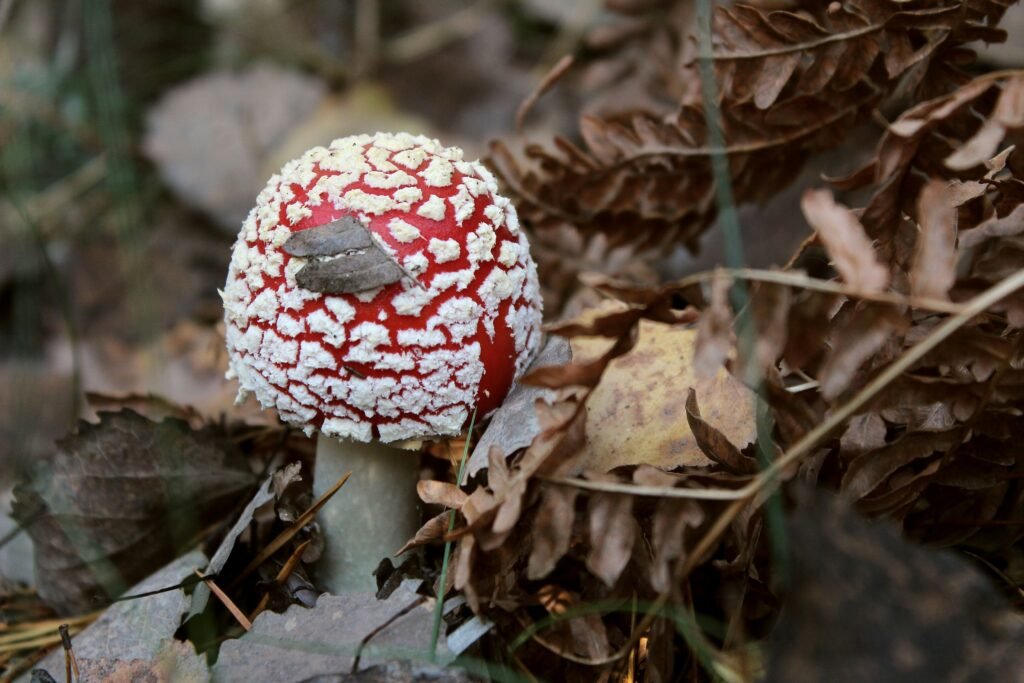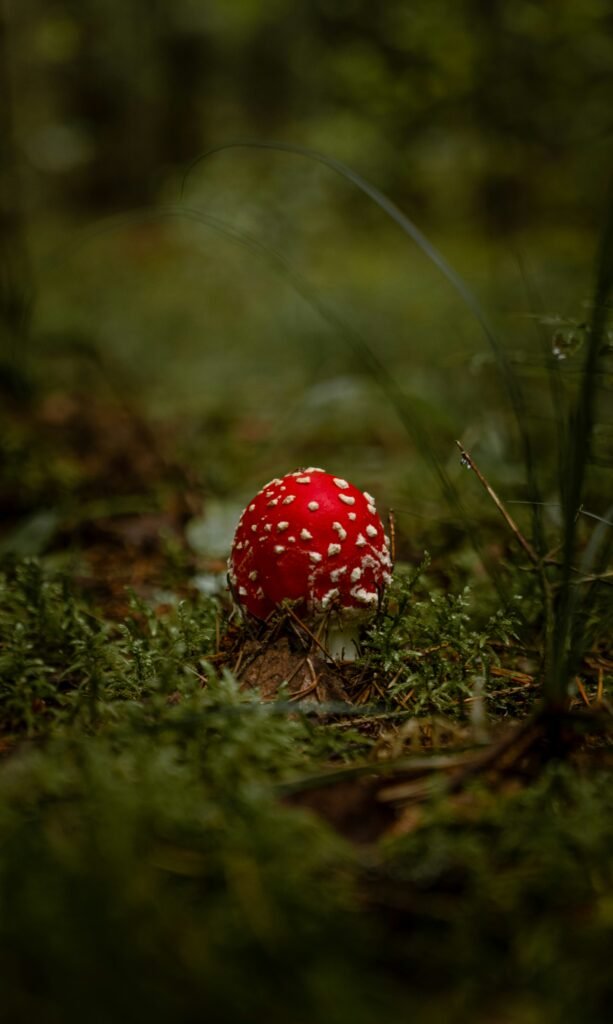You’re about to embark on a fascinating journey into the world of fungi, where beauty often disguises danger. In this article, “What Is The Most Toxic Mushroom In The World?” you’ll learn about the infamous mushroom that holds the title of the deadliest of them all. Packed with captivating details and essential information, this read will unveil the secrets of this perilous organism and why it demands both respect and caution. By the end, you’ll have a newfound appreciation for the delicate balance of nature and the hidden perils within it. Enjoy this exploration, and always tread carefully when foraging in the wild. Have you ever wondered, “What Is The Most Toxic Mushroom In The World?” If you love wandering through forests or enjoy foraging for wild edibles, this question is likely to pop into your mind. Understanding which mushrooms are safe and which are toxic can be the difference between a delightful culinary experience and a hazardous misadventure.

A Glimpse Into the World of Mushrooms
Mushrooms are fascinating organisms that come in a wide variety of shapes, sizes, and colors. Some are edible and delicious, while others are toxic and can cause serious health issues. The distinction is important not just for your safety, but also for the well-being of foraging communities and ecosystems.
Types of Mushrooms
While we can’t cover all types of mushrooms here, it’s helpful to categorize them broadly:
- Edible Mushrooms: Common examples include Button Mushrooms, Portobello, and Shiitake.
- Medicinal Mushrooms: Reishi, Lion’s Mane, and Turkey Tail fall into this category. These are often used in supplements and traditional medicine.
- Psychedelic Mushrooms: Mushrooms containing the psychoactive compound psilocybin, such as Psilocybe cubensis.
- Toxic Mushrooms: The ones you should definitely steer clear of, like the Death Cap and Destroying Angel.
Why Knowing Your Mushrooms Matters
Mushrooms play an important role in ecosystems by breaking down organic matter. They can also be a delightful addition to your diet, offering various nutritional benefits. However, picking the wrong mushroom can lead to severe poisoning, and in some cases, be fatal. This duality makes it crucial for you to understand which mushrooms are toxic and why.
The Titleholder: Amanita Phalloides (Death Cap)
When it comes to toxicity, the Amanita phalloides, commonly known as the Death Cap, holds the notorious title of being the most toxic mushroom in the world. Responsible for the majority of mushroom poisoning fatalities globally, this mushroom is one you definitely want to avoid.
Identification Features
Recognizing the Death Cap is essential for ensuring your safety. Here’s how you can identify it:
| Characteristic | Description |
|---|---|
| Cap | 5-15 cm in diameter, varies in color from greenish to yellowish to brown. |
| Gills | White and crowded, not attached to the stalk. |
| Stalk | White, comes with a bulbous base and a volva. |
| Spore Print | White |
Habitat and Distribution
The Death Cap is widespread across Europe, North America, and parts of Asia. It typically grows near broadleaf trees such as oaks, chestnuts, and beeches.
Toxic Compounds
What makes the Death Cap so dangerous are the toxins it contains:
- Amatoxins: These are lethal even in small quantities and do not degrade with cooking. They inhibit RNA polymerase II, an enzyme crucial for life, by binding tightly to it.
- Phallotoxins and Virotoxins: Although less toxic than amatoxins, these compounds still contribute to the mushroom’s deadly reputation.
Symptoms of Poisoning
After ingestion, the symptoms of Death Cap poisoning may be delayed, often only appearing 6-12 hours after consumption. Symptoms are usually biphasic:
- Initial Phase: Severe abdominal pain, vomiting, and diarrhea.
- Second Phase: Apparent recovery period followed by severe liver and kidney damage, leading to possible multi-organ failure.
Treatment
If you suspect someone has ingested a Death Cap mushroom, it’s crucial to seek medical help immediately. Treatment often involves activated charcoal and aggressive supportive care. Liver transplants are sometimes necessary in severe cases.
The Runners Up: Other Highly Toxic Mushrooms
While the Death Cap might be the most notorious, it’s not the only dangerous mushroom you should be aware of. Here are some other highly toxic varieties:
Amanita Virosa (Destroying Angel)
Another member of the Amanita family, the Destroying Angel is equally deadly.
| Characteristic | Description |
|---|---|
| Cap | Convex, white in color, 5-10 cm in diameter. |
| Gills | White and free from the stalk. |
| Stalk | White, with a large, sac-like volva at the base. |
| Spore Print | White |
The toxic compounds and symptoms are similar to those of the Death Cap, making it just as dangerous.
Galerina Marginata (Deadly Galerina)
This small, brownish mushroom might look harmless, but it’s packed with potent toxins.
| Characteristic | Description |
|---|---|
| Cap | 1-5 cm in diameter, brown to yellow-brown, sticky when wet. |
| Gills | Brown, turning rusty brown as they age. |
| Stalk | Thin, with a ring near the top. |
| Spore Print | Rusty brown |
Galerina marginata contains amatoxins like the Death Cap, causing similar symptoms and requiring immediate medical attention.
Cortinarius Speciosissimus (Deadly Webcap)
This mushroom stands out due to its web-like cortina, but don’t let its appearance fool you.
| Characteristic | Description |
|---|---|
| Cap | Brownish-orange, 5-10 cm in diameter. |
| Gills | Rust-colored. |
| Stalk | Yellow-orange, with remnants of the web-like cortina. |
| Spore Print | Rusty brown |
The toxin orellanine causes kidney failure, but symptoms can take days to weeks to appear, making it particularly insidious.
Conocybe Filaris
Often found in lawns and grassy areas, Conocybe filaris is another mushroom that can spoil your day.
| Characteristic | Description |
|---|---|
| Cap | Cone-shaped, light brown, 1-2 cm in diameter. |
| Gills | Rusty brown, crowded. |
| Stalk | Thin and fragile. |
| Spore Print | Rusty brown |
It contains amatoxins, causing symptoms akin to Death Cap poisoning.
Common Myths and Misconceptions
Misunderstanding which mushrooms are toxic often stems from common myths and misconceptions. Let’s clear the air:
Myth 1: “If Animals Can Eat It, So Can I”
Some people believe that if a mushroom is consumed by wildlife, it must be safe for humans. This is a dangerous assumption. Many animals have evolved to detoxify certain mushrooms that are harmful to humans.
Myth 2: “Toxic Mushrooms Taste Bad”
You might think that a toxic mushroom would have an off-putting taste, but many poisonous mushrooms taste quite pleasant. The Death Cap is known to have a mild and agreeable flavor, which can be misleading.
Myth 3: “Cooking Eliminates Toxicity”
While heat can neutralize some toxins, many mushroom poisons do not break down when cooked. Amatoxins, for example, remain potent even after cooking.
Myth 4: “All Red-Capped Mushrooms Are Toxic”
Color is not a reliable indicator of toxicity. Some red-capped mushrooms are edible, while others are deadly. Always identify the species rather than relying on color alone.

Safety Precautions When Foraging
Foraging for wild mushrooms can be incredibly rewarding, but safety should always be your top priority.
Get Educated
Before heading out, educate yourself about local mushroom species. Many communities offer mushroom identification classes and foraging tours with experienced guides.
Use Reliable Resources
Invest in field guides that are specific to your region. Websites and smartphone apps can also be helpful, but they should not be your sole sources of information. Cross-reference multiple sources to ensure accuracy.
Forage With Experts
When starting out, forage with someone experienced. A seasoned forager can help you identify safe mushrooms and avoid toxic ones.
Take Photographs
If you’re unsure about a mushroom, take detailed photographs and consult experts or online forums before consuming it. This can also be helpful if you need to identify a mushroom in the case of suspected poisoning.
Alternatives to Foraging
If the idea of foraging for mushrooms seems daunting, or if you’re worried about making a mistake, there are safer alternatives.
Buy From Reputable Sources
Farmers markets and grocery stores often carry a variety of edible mushrooms. Purchasing from these sources eliminates the risk of misidentification.
Grow Your Own Mushrooms
Growing mushrooms at home can be a fun and rewarding hobby. Kits are available for many popular edible mushrooms, such as oyster mushrooms and shiitake. This way, you can enjoy fresh mushrooms without the risk.
Join a Mycological Society
Mycological societies are clubs for people interested in mushrooms, ranging from amateurs to professional mycologists. These societies often host educational events, foraging expeditions, and mushroom tastings, providing a safe and informative environment to learn more about mushrooms.

Conclusion: Safety First
While mushrooms can be a magical and mysterious aspect of nature, it’s essential to approach them with a sense of caution and respect. Understanding the toxic varieties, especially the deadly Amanita phalloides or Death Cap, can help you stay safe and enjoy the world of mushrooms responsibly. Always prioritize your well-being over the thrill of discovery, and when in doubt, leave the mushroom out!
